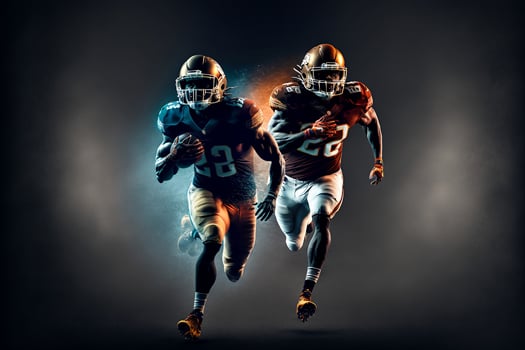
Herniated discs are a common injury among NFL players, as the physical demands of the sport can put tremendous strain on the spine. A herniated disc occurs when a disc in the spine ruptures or bulges, causing pressure on the nerves that run through the spinal column. This can cause a great deal of pain and discomfort, and it can severely limit an athlete's ability to perform.
In many cases, NFL players will attempt to play through their herniated disc injuries. This is especially true of players who are key contributors to their teams’ success, as they may feel pressure to stay on the field and help their teams win.
However, playing with a herniated disc can be incredibly challenging. The pain and discomfort can be severe, making it difficult for players to perform at their best. It can also increase the risk of further injury, as players may compensate for their injuries by altering their movement patterns or putting additional stress on other parts of their bodies. This article discusses the various issues involved when NFL players have herniated discs.
Playing with Herniated Discs
Despite the risks, many NFL players have successfully played through herniated disc injuries. One example is former NFL quarterback Tony Romo, who played with a herniated disc in several games during the 2013 season. Despite the injury, Romo was still able to lead his team on the field and compile impressive statistics.
However, not all players are able to play with herniated discs. In some cases, the injury may be too severe or too painful to allow the player to perform at a high level. This can lead to missed games or even season-ending surgeries.
One example of a player who was forced to miss time due to a herniated disc is former NFL linebacker Ryan Shazier. During a game in 2017, Shazier suffered a severe spinal injury that included a herniated disc. The injury was so serious that it required spinal stabilization surgery and forced Shazier to miss the entire 2018 season. Although Shazier made progress in his recovery, he retired from the NFL in 2020.
Overall, the decision to play with a herniated disc is a complex one that depends on a variety of factors. Some players may be able to manage the pain and continue to play at a high level, while others may be forced to sit out due to the severity of their injuries.
Conservative Treatments
If an NFL player does decide to play through a herniated disc injury, there are several things he can do to manage the pain and reduce the risk of further injury. One option is to wear a supportive brace or compression garment, which can stabilize the spine and reduce pressure on the nerves.
Players may also choose to participate in physical therapy or receive chiropractic treatment, which can increase mobility, reduce pain, and strengthen the muscles that support the spine. In some cases, players may undergo epidural injections, which can provide temporary relief from pain and inflammation.
Surgical Options
While some NFL players are able to continue playing while dealing with symptoms of a herniated disc, others may require surgery to fully recover. In many cases, surgery is a last resort and is only recommended if conservative treatments like physical therapy and pain management have been unsuccessful.
There are several types of surgery that can be used to treat herniated discs in the spine. One of the most common is a discectomy, which involves removing the portion of the disc that is pressing on the nerves. A discectomy or a minimally invasive microdiscectomy can be done through a small incision in the back and is typically performed on an outpatient basis.
Another type of surgery that may be used to treat herniated discs is spinal fusion surgery. This procedure involves fusing together two or more vertebrae in the spine, which can stabilize the spine and reduce pressure on the nerves. Spinal fusion surgery is typically more invasive than a discectomy and may require a longer recovery period.
Regardless of the treatment approach, it is important for NFL players and athletes of all ages and skill levels to prioritize their spinal health and take steps to prevent herniated disc injuries in the future. This may include things like maintaining good posture, engaging in regular exercise and strength training, and taking breaks to rest and recover after strenuous physical activity.
If you have a herniated disc due to sports-related activities, surgery may be discussed and potentially recommended to provide relief. For example, if your herniated disc is not responding to conservative treatment, a discectomy may be the best option. Although this is generally a very successful procedure, patients with a large hole in the outer ring of the disc have a significantly higher risk of reherniation following surgery. Often, the surgeon will not know the size of the hole until beginning surgery, and having a large hole in the outer ring of the disc more than doubles the risk of needing another operation. A new treatment, Barricaid, is a bone-anchored device that closes this hole, and 95 percent of Barricaid patients did not undergo a reoperation due to reherniation in a 2-year study timeframe. This treatment is done immediately following the discectomy—during the same operation—and does not require any additional incisions or time in the hospital.
If you have any questions about the Barricaid treatment, ask your doctor or contact us at 844-288-7474.
For full benefit/risk information, please visit: https://www.barricaid.com/instructions.


Comments